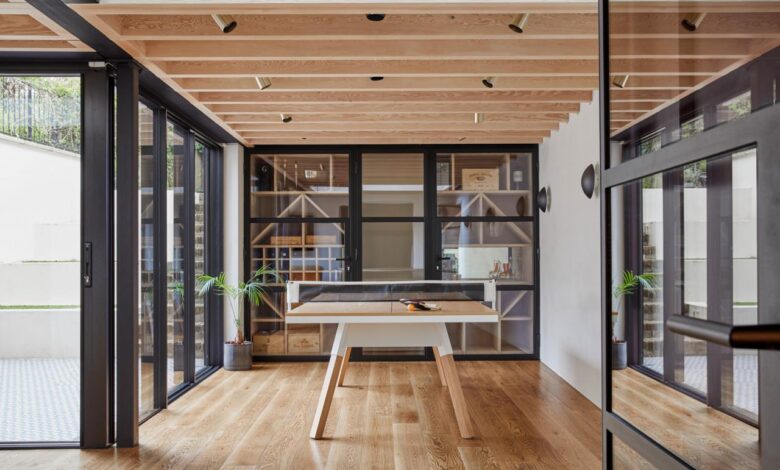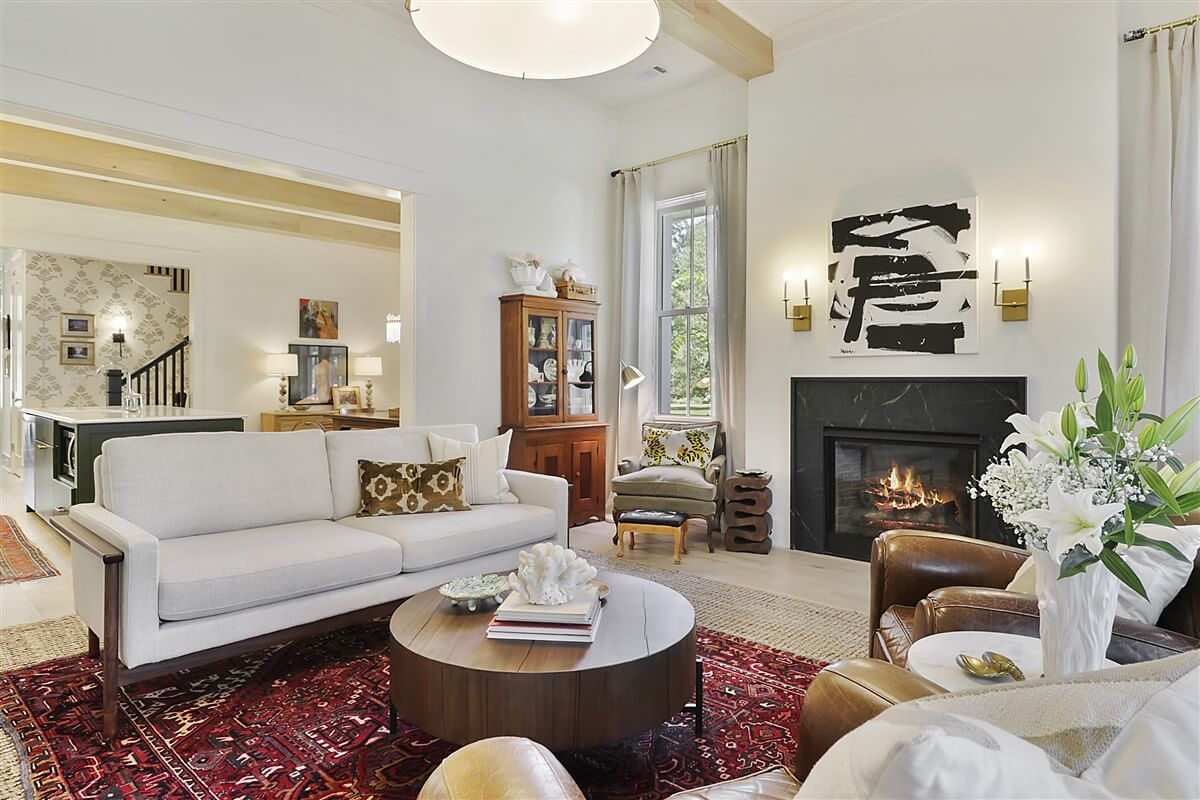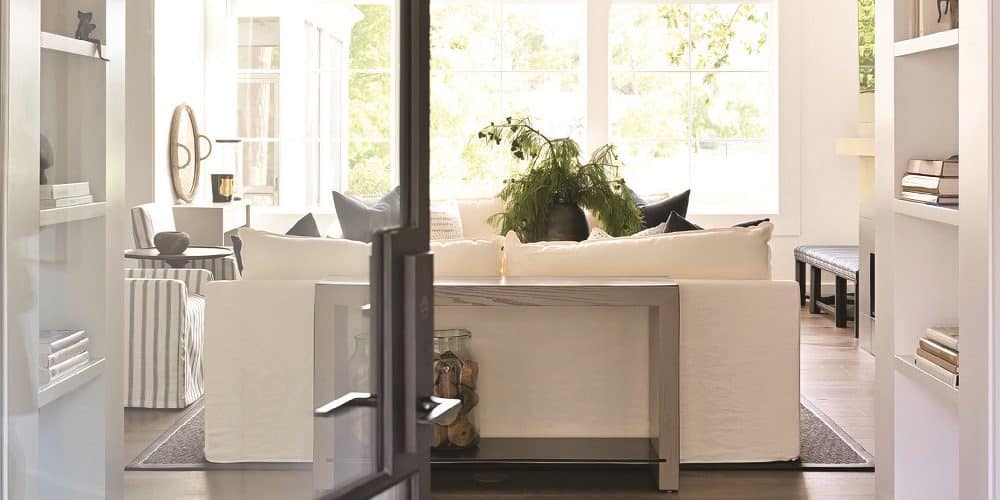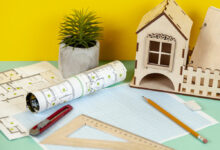Healthy Home Architecture Contributes to Human Well-Being

The home has always been a sanctuary, but in an age of rising environmental concerns and a growing awareness of holistic well-being, its role is undergoing a profound transformation. Healthy home architecture is a new paradigm that moves beyond simple aesthetics and functionality to create a living space that actively contributes to the physical, mental, and emotional health of its occupants. This isn’t just about adding air purifiers; it’s a comprehensive approach that integrates sustainable materials, natural light, clean air and water, and a new understanding of human psychology into the very fabric of a home. This article will take a deep dive into the core concepts of healthy home architecture, exploring the pivotal role of eco-friendly materials, the integration of smart technology, the focus on biophilic design, and the immense opportunities and challenges that lie ahead for a more sustainable, resilient, and human-centric future.
A Foundation for Health

A healthy home is, by definition, a resilient one. It’s a home that is designed to withstand the challenges of tomorrow, from extreme weather events and natural disasters to a rapidly changing climate. This requires a new approach to architecture and building materials.
A. The Power of Advanced Materials
The new era of healthy home architecture is powered by a new generation of advanced materials that are more durable, more sustainable, and more energy-efficient than the traditional ones.
- Sustainable and Recycled Materials: The use of sustainable and recycled materials is a key component of a healthy home. This includes everything from recycled steel and plastic to reclaimed wood and bamboo. These materials not only reduce a home’s carbon footprint but also provide a new level of aesthetic appeal and a connection to nature.
- Low-VOC and Non-Toxic Finishes: Volatile Organic Compounds (VOCs) are chemicals found in many paints, adhesives, and other building materials that can be harmful to a person’s health. A healthy home is built with low-VOC and non-toxic finishes, which can significantly improve a home’s indoor air quality and reduce a person’s exposure to harmful chemicals.
- Moisture-Resistant and Mold-Free Building: Mold and mildew are a major source of respiratory illnesses and allergies. A healthy home is built with moisture-resistant materials and a design that is focused on a high level of ventilation. This can prevent the growth of mold and mildew, which can significantly improve a home’s indoor air quality.
By using these advanced materials, architects can design a home that is not only more beautiful but also more resilient, more durable, and more sustainable.
B. A Zero-Carbon Footprint
A healthy home is also a net-zero home, a home that produces as much energy as it consumes. This is a crucial step toward a more sustainable and environmentally conscious future.
- Solar Power and Battery Storage: The use of solar panels and a home battery storage system is a key component of a net-zero home. The solar panels can generate a continuous stream of clean energy, and the battery storage system can store the excess energy for use at night or on a cloudy day.
- Smart Grids and Energy Management: A healthy home is a smart home, and a smart home is a part of a larger smart grid. The home’s energy management system can communicate with the grid, using the excess energy from the solar panels to power the home or to sell the energy back to the grid. This can reduce the home’s energy bill and its carbon footprint.
- Geothermal and Passive Design: The use of geothermal heating and cooling systems and a passive design, which takes advantage of a home’s natural light and temperature, is a new and powerful trend in healthy home architecture. This can reduce a home’s energy consumption by a significant margin.
The Biophilic Home
As our urban environments become more dense and our digital lives more pervasive, there is a growing, universal human need to reconnect with nature. This is the core philosophy of biophilic design, a movement that integrates natural elements and processes into the built environment.
A. The Power of Natural Light and Air
The use of natural light and natural ventilation is a key component of a biophilic home. A home that is filled with natural light can have a significant positive impact on a person’s mental and physical health, from a reduction in eye strain and headaches to a lower risk of seasonal affective disorder (SAD).
- Large Windows and Skylights: The use of large windows and skylights is a new and powerful trend in biophilic home design. They can fill a home with natural light, create a sense of openness, and provide a connection to the outside world.
- Natural Ventilation: A healthy home is designed for a high level of natural ventilation. This can improve a home’s indoor air quality, reduce the need for energy-intensive air conditioning, and provide a sense of connection to the outside world.
- The Use of Green Walls and Indoor Gardens: The use of green walls and indoor gardens is a new and powerful trend in biophilic design. They can improve a home’s indoor air quality, reduce a person’s stress levels, and provide a stunning aesthetic appeal.
B. The Psychological Impact
Beyond the physical, biophilic design has a profound psychological impact, providing a sense of comfort, a feeling of security, and a connection to something larger than ourselves.
- A Sense of Place: The use of local and natural materials in a home’s design can create a sense of place and a feeling of belonging. It connects a home to its surrounding landscape and to the cultural history of a region.
- A Connection to the Cycle of Life: A biophilic home is a living, breathing ecosystem. The use of natural light, natural ventilation, and indoor plants creates a connection to the cycle of life, a feeling of being a part of something larger than ourselves.
- A Feeling of Awe: The use of a natural vista, a large window with a view of a garden, or a large, open atrium with natural light can create a feeling of awe and a sense of wonder. This can have a powerful, positive impact on a person’s mental health.
The Intelligent Home

A healthy home is an intelligent one, a home that is equipped with a new generation of smart technology that can adapt to the needs of its occupants and the challenges of tomorrow.
A. The Power of Building Automation and AI
The new generation of smart home technology is powered by artificial intelligence. AI can automate a wide range of tasks, from adjusting the temperature to turning off the lights, and it can learn a homeowner’s habits and preferences to create a more personalized and comfortable living experience.
- Centralized Control: A smart home can be controlled from a single device or a smartphone app. This allows a homeowner to control everything from the lighting and temperature to the security system and the entertainment system from anywhere in the world.
- Predictive Maintenance: AI-powered systems can analyze a home’s data to predict when a system, such as an HVAC unit or a water pump, is likely to fail. This allows a homeowner to schedule maintenance proactively, preventing a costly and unscheduled breakdown.
- Personalized and Adaptive Environments: An AI-powered smart home can learn a homeowner’s habits and preferences and then adapt the home’s environment to them. The smart home can, for example, learn a homeowner’s favorite temperature and automatically adjust the thermostat to that temperature when they are home.
B. The Human Element
A home is, at its core, a place for people. While technology can solve many problems, it cannot replace the human element of empathy, community, and social connection. The challenge is to use technology to enhance human interaction, not to replace it. Home design must be human-centric, creating spaces that foster community and belonging.
Conclusion
Healthy home architecture is not a passing trend but a powerful and transformative movement that is fundamentally reshaping our relationship with our homes and with the environment. It is a testament to the growing awareness from both architects and builders that a healthier future is not just an ethical imperative but a business necessity. The use of advanced materials, a new focus on energy efficiency, and the integration of a new generation of smart technology are all a part of this new era. The new era of healthy home architecture is a clear signal that the future of home design is a new kind of living, a living that is as adaptable and as resilient as it is intelligent and sustainable.
However, as we embrace this new era, we must also confront the significant challenges that lie ahead. The high cost of a healthy home, the need for a new legal and regulatory framework, and the challenges of data privacy and security are all hurdles that must be addressed proactively. The future of home design is a journey that will be defined not just by its technological prowess but by its ability to create a world that is more connected, more human-centric, and more conducive to a person’s overall well-being. The healthy home is here, and it promises to build a future where our homes are as healthy and as happy as we are.

